 |
|
Arabsat-6A (Falcon Heavy) 11 April 2019 |
Space Launch Complex 39A Kennedy Space Center |
A SpaceX Falcon Heavy rocket launched Arabsat-6A into orbit at 6:35 p.m. on 11 April 2019 from Launch Complex 39A at Kennedy Space Center. Following booster separation, Falcon Heavy’s two side boosters landed at SpaceX’s Landing Zones 1 and 2 (LZ-1 and LZ-2) at Cape Canaveral Air Force Station around 8 minutes after launch. Falcon Heavy’s center core landed almost ten minutes after launch on the “Of Course I Still Love You” droneship stationed in the Atlantic Ocean. The Arabsat-6A satellite deployed into orbit from the second stage approximately 34 minutes into the flight. |
|
From the SpaceX press release: Arabsat-6A is a high-capacity telecommunications satellite that will deliver television, radio, Internet, and mobile communications to customers in the Middle East, Africa, and Europe. Built on Lockheed Martin’s enhanced LM 2100 platform, Arabsat-6A includes several innovations that provide advanced Ka- spot beam communications services and Ku and Ka-band coverages in addition to other frequency bands. It will be located at one of Arabsat’s orbital positions and will support Arabsat’s competitive position as the first operator in the region for satellite capacities and services. |
|
SCRUB - 10 April 2019 |
|
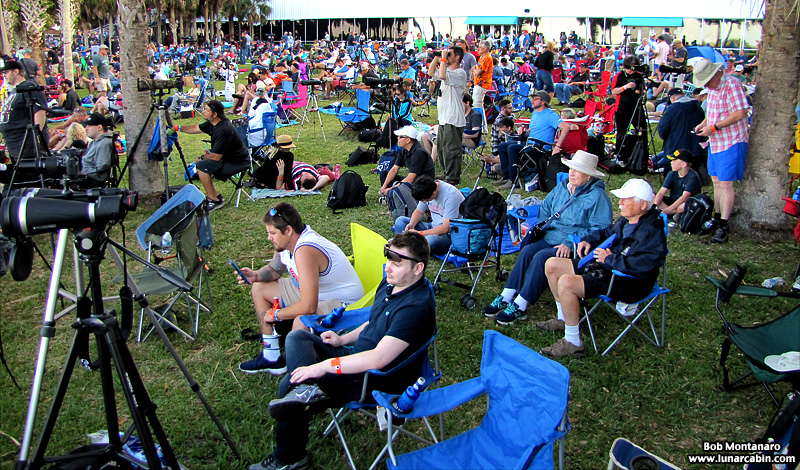 |
|
| The crowd on the lawn behind the Saturn V Center next to the Banana Creek Viewing Area at Kennedy Space Center is seen here before their disappointment at the scrub due to high wind shear in the high altitude winds during the first launch attempt on 10 April 2019. The crowd had noticeably thinned out for the next launch attempt the following day. | |
LAUNCH - 11 April 2019 |
|
 |
|
The high altitude winds calmed down overnight allowing for an on time liftoff at 6:35 p.m. on 11 April 2019. Gaseous oxygen vents from the pad during fueling of the Falcon Heavy, which is hidden behind the Fixed Service Structure. |
|
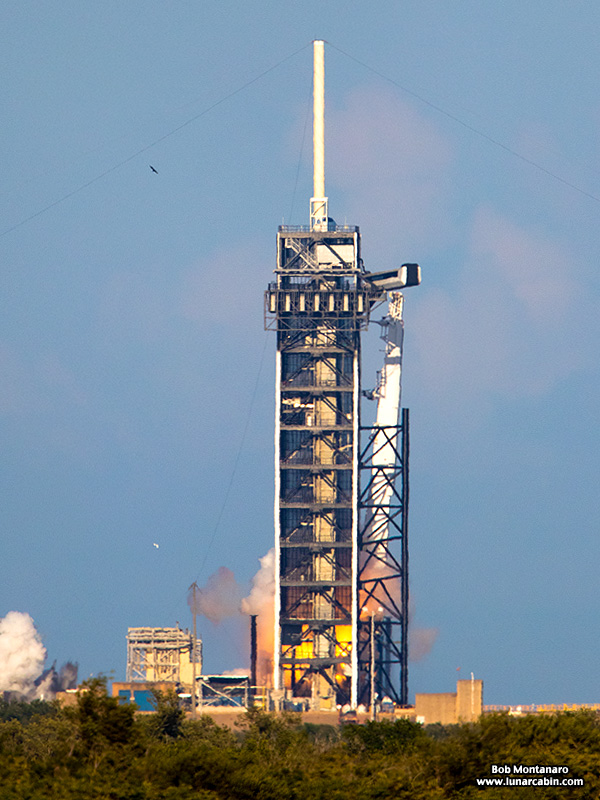 |
|
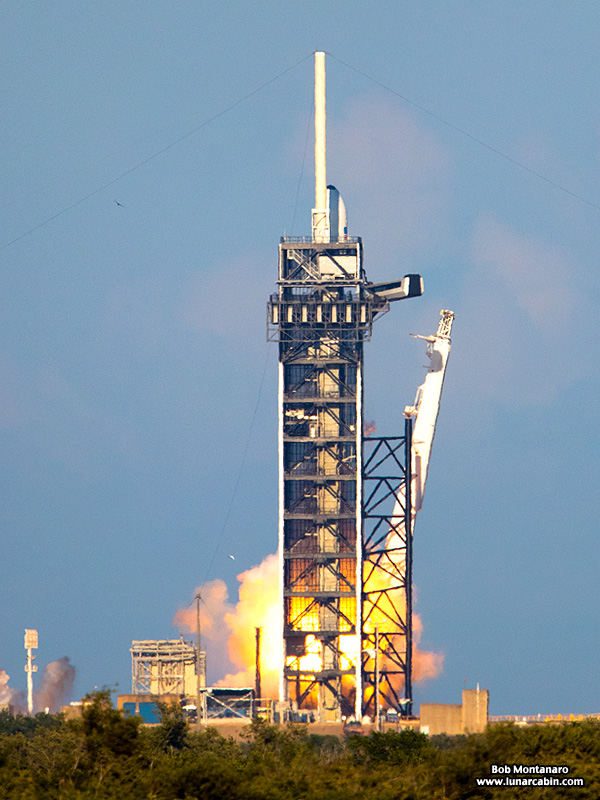 |
|
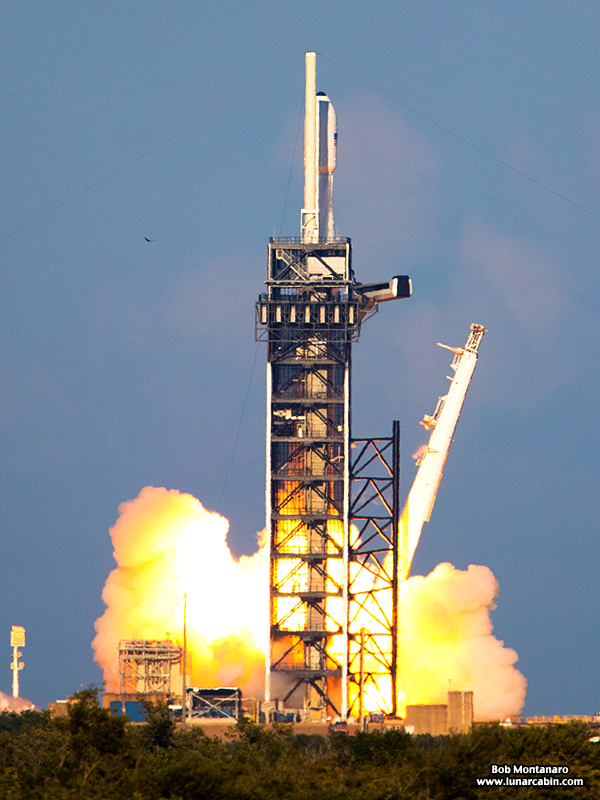 |
|
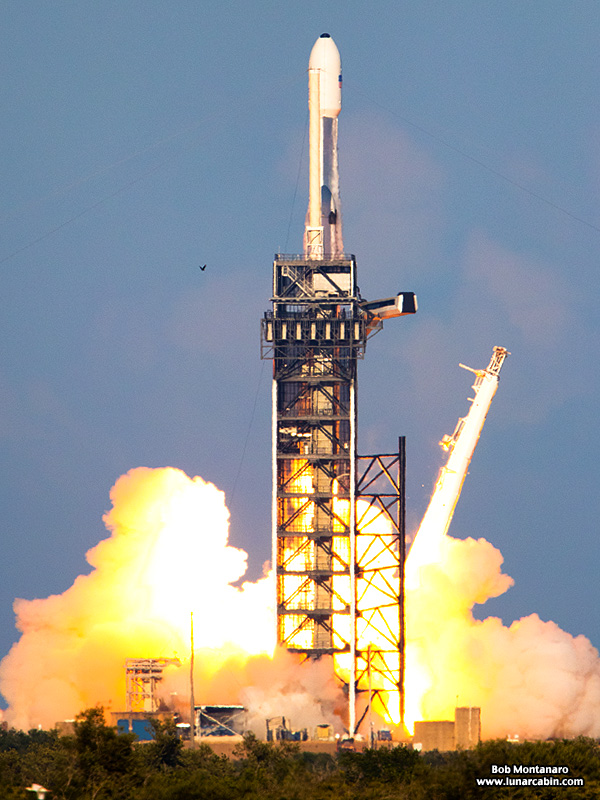 |
|
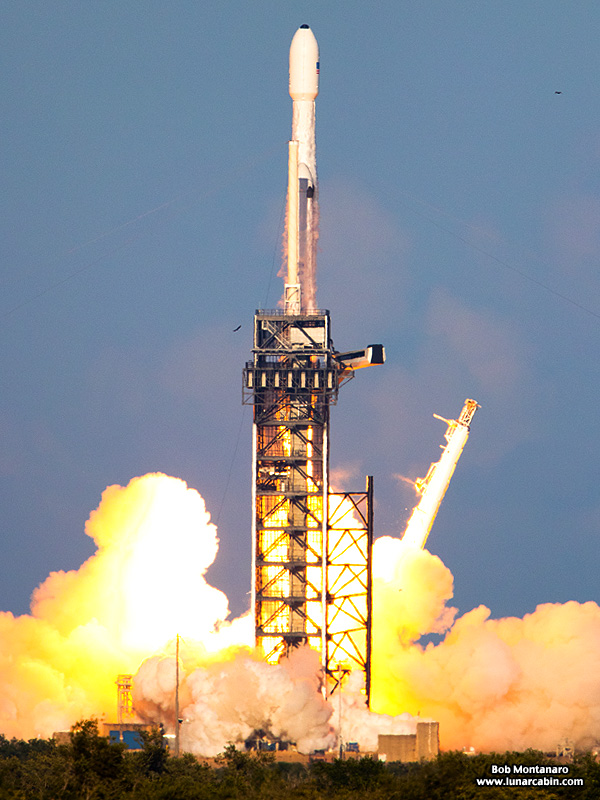 |
|
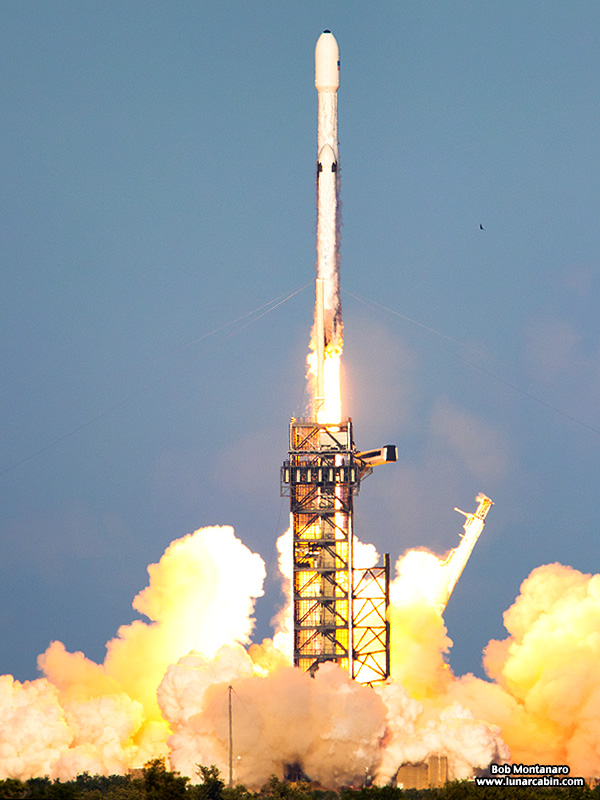 |
|
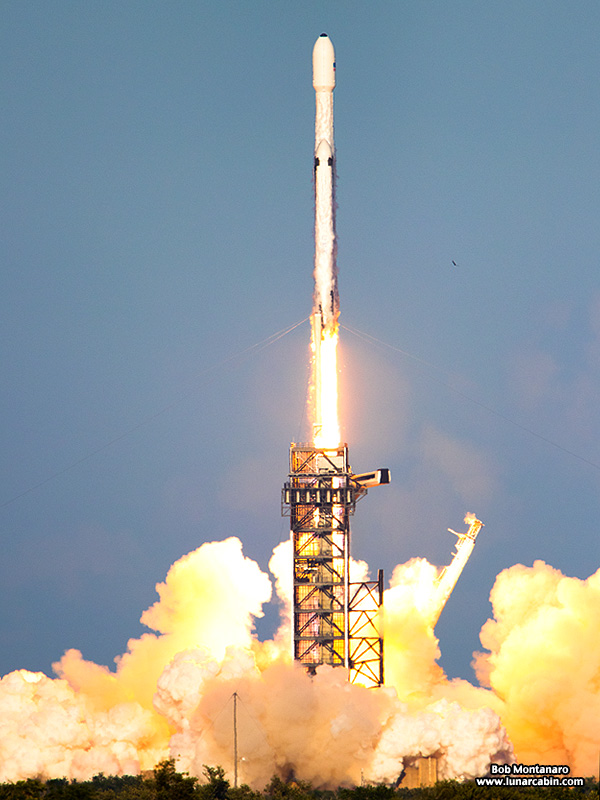 |
|
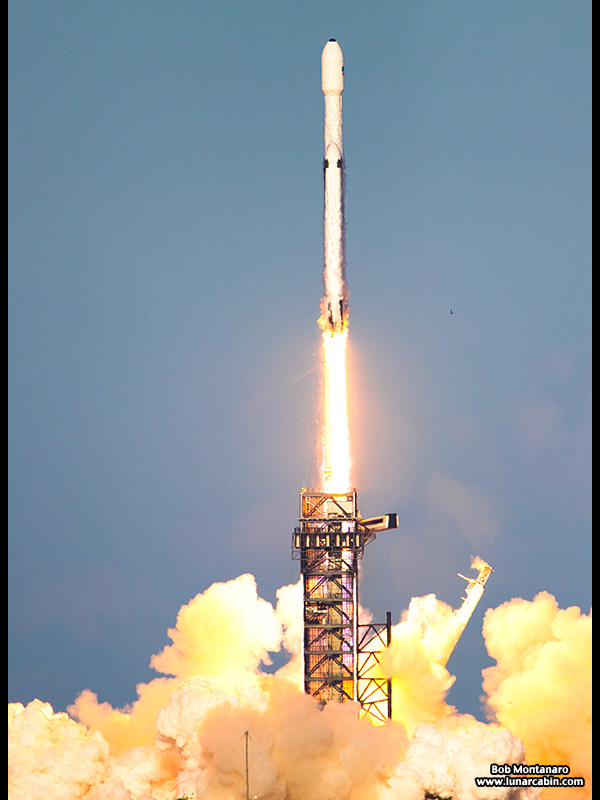 |
|
 |
|
 |
|
 |
|
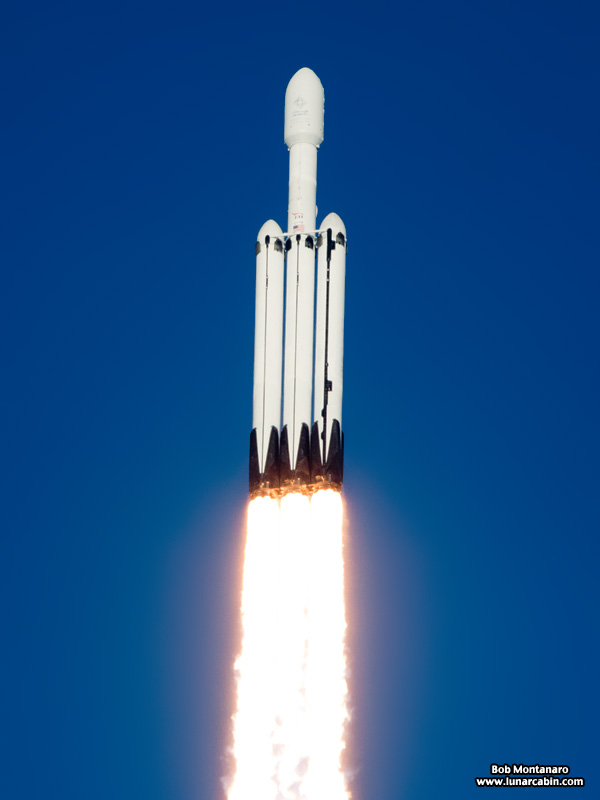 |
|
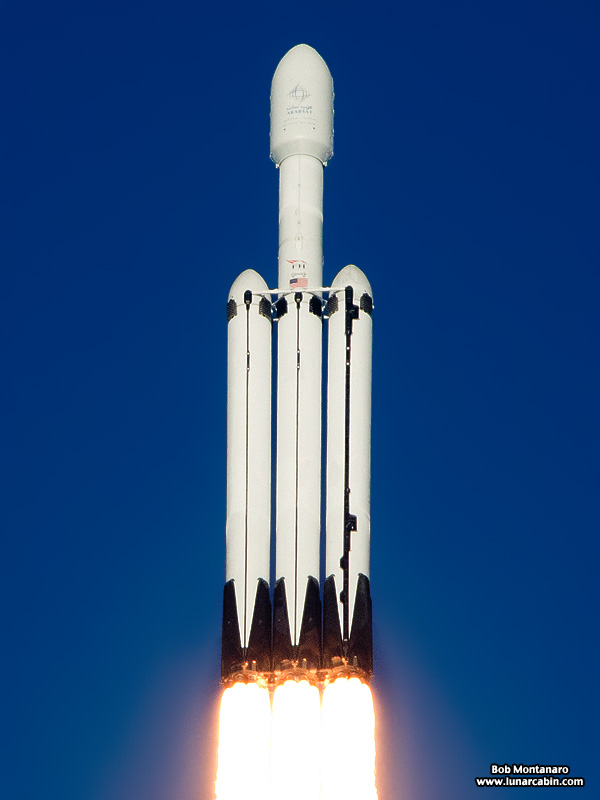 |
|
 |
|
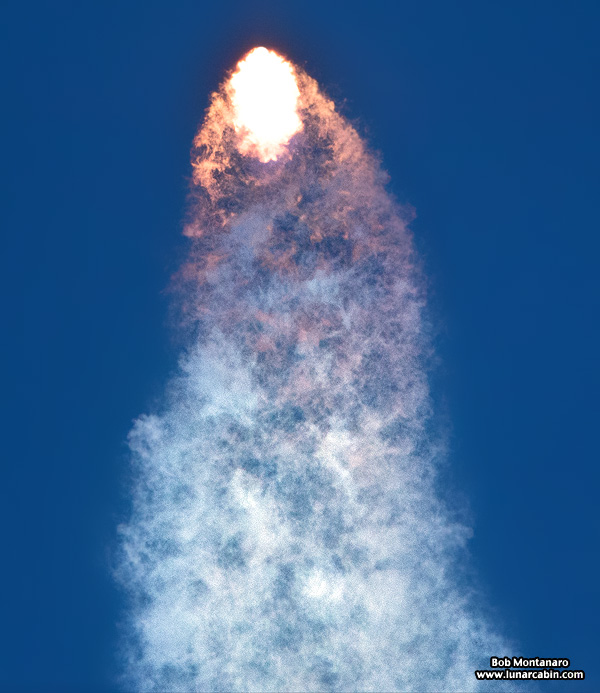 |
|
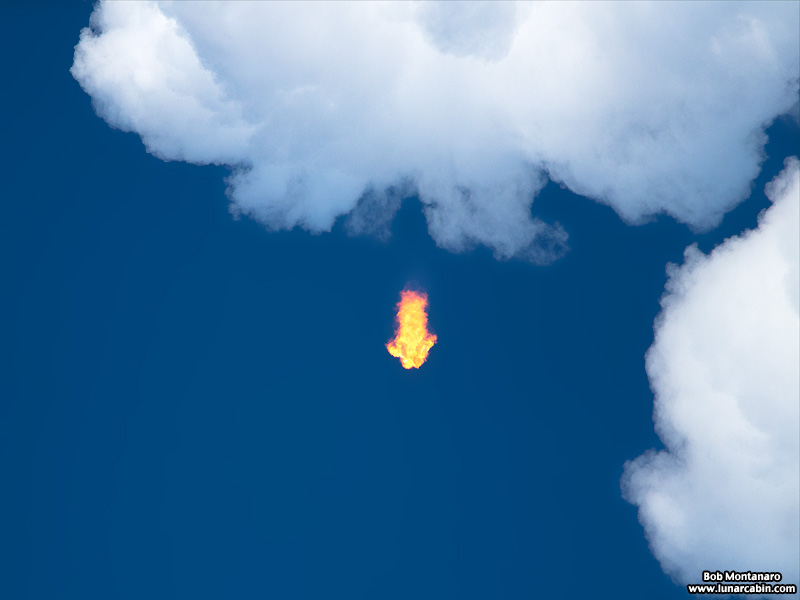 |
|
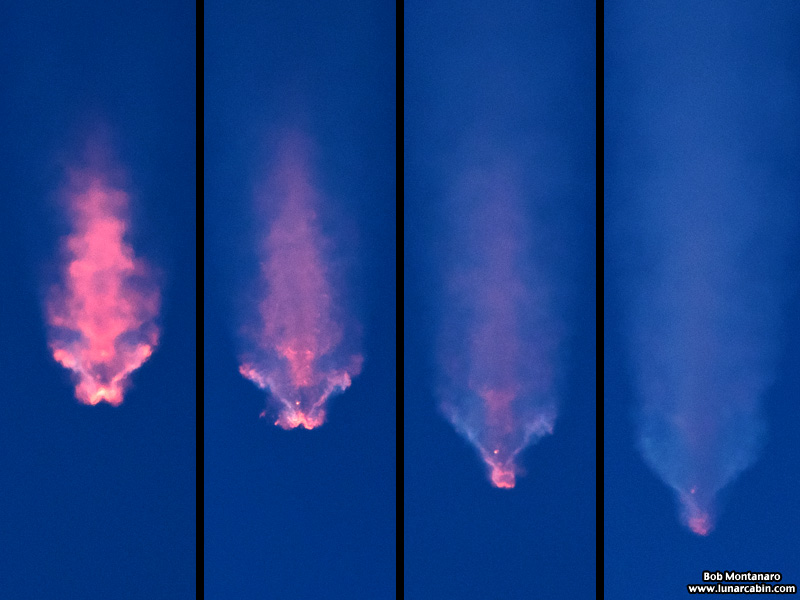 |
|
The side boosters begin throttling down prior to separation from the center core booster. |
|
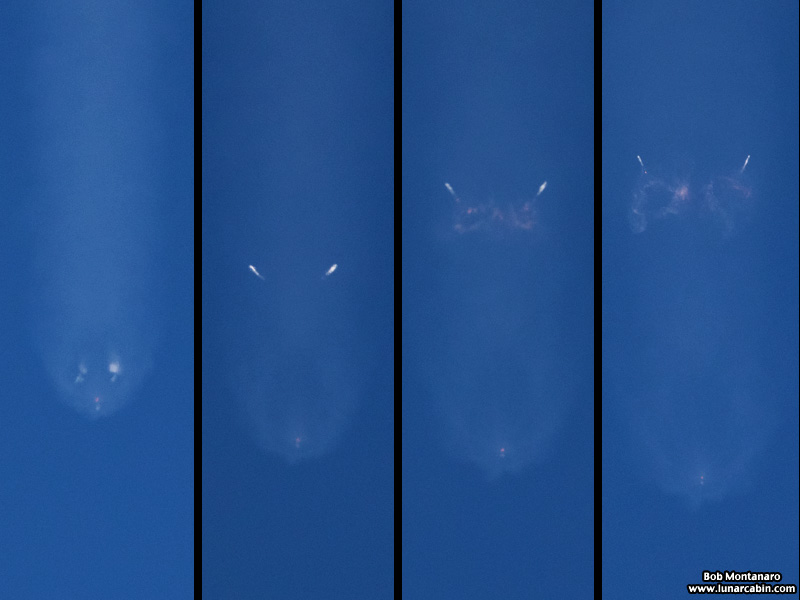 |
|
The side boosters separate from the core booster and begin maneuvering back for a landing at Cape Canaveral. |
|
 |
|
The side boosters begin their entry burn. |
|
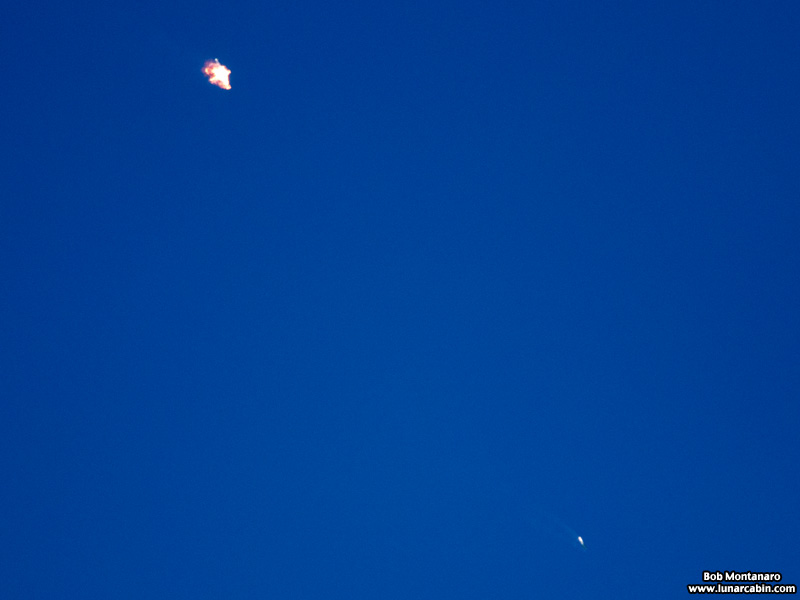 |
|
The booster at lower right ends its entry burn; the booster at upper left shuts down moments later. |
|
 |
|
One of the side boosters falling toward the Landing Zone just prior to the landing burn and touchdown. |
|
 |
|
The last view of one of the boosters before intervening trees obscured the landing burn and touchdown. |
|
 |
|
All contents copyright Lunar Cabin |
|